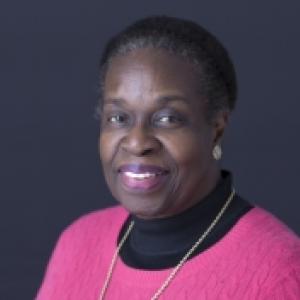In the inaugural webinar held by the ICFJ Global Health Crisis Reporting Forum we heard from Dr. Samba Sow, one of six of the World Health Organization's special envoys on COVID-19. Dr. Sow is director general of the internationally recognized Center for Vaccine Development-Mali. The online talk was moderated by Joyce Barnathan, president of the International Center for Journalists.
This article is part of our online coverage of reporting on COVID-19. To see more resources, click here.
Dr. Samba Sow, a WHO special envoy who helped contain the spread of Ebola in West Africa, says the key to fighting the COVID-19 virus is communication with influential local leaders as well as solutions that are adapted to individual countries and communities.
“It’s all about education, information, sensitization,” said Sow, who stressed that journalists play a critical role in making sure good information gets to the right people. “We are doctors. I can treat someone, but we don’t know communication. We need you all.”
Here are the highlights from the discussion:
On the difference between the Ebola outbreak and COVID-19:
- “[COVID-19] is much bigger; the geographic coverage is greater. This one started in Western countries with much wealthier populations … while Ebola started in remote rural difficult-to-access areas in Africa. The number of cases is going up more quickly.”
- “Ebola kills so fast. It’s a much more severe disease, because of the bleeding. As a doctor or journalist or human being, once you see a case of Ebola you will never forget it... This one is big, but Ebola was so powerful, so dangerous and so severe.”
[Read more: How can journalists protect themselves during the COVID-19 pandemic?]
On deficiencies in health care systems to deal with COVID-19:
- “[COVID-19] shows that the health care systems even in places like Europe and Asia and the U.S. are very, very limited. The health care systems in Africa are weak. There are not many African countries with adequate laboratories or trained personnel to detect and diagnose the problem.”
On the low number of COVID-19 cases in Africa:
- “There are countries where the confirmed cases are going up, and places where they are not going up. We don’t know what’s happening in those places. Maybe zero cases doesn’t mean zero cases.”
On why closing borders to stop the spread of the disease within Africa won’t work:
- “If the United States wants to close borders, not even a fly can get in. But in Africa... there is really no border between some countries. There are thousands of miles over land or rivers that you can’t close. People will find another way to enter.... There are villages where half is in one country and the other in another country. How would you close that?”
[Read more: Past health crises can inform reporting on COVID-19]
On the vital need to reach out to influential local leaders in Africa:
- “If you bring in a professor or WHO official, and a traditional healer contradicts him, the people will listen to the traditional healer... You have to target key individuals in a community. Talk to them and show them the truth. And make them believe they are part of this. Second, you have to identify the origin of those bad rumors. Target them and talk to [local leaders] specifically.”
On why social distancing may not work everywhere:
- “When you make [social distancing policies] so rigorous, people will try to find their own ways...It’s difficult to have people locked down for weeks... If you can make things flexible and adapt them to local communities, that will help.”
On the need to make citizens “worried” about the crisis:
- “If you want to win a situation, you have to quickly be willing to worry your population. Once you start to worry you will take it seriously. It happened in Europe. People were not taking this seriously... In general, in Africa the population is still not worried about this.”
On what journalists need to do to safely cover COVID-19:
- “Make sure when you walk around in a community that you follow the country guidelines. If a journalist wants to go to health care centers, you’re highly exposed. Talk to the doctors and ask them.... That’s your No. 1 protection.”
- “You should always have water and soap and wash your hands and reduce your direct contact with people. And don’t touch all the places. When you are a reporter, have your gel and your water and soap. If you’re talking to a high-risk population, you should try to cover your nose and your mouth.”
On why communication is a key tool to stop COVID-19:
- “The best way to stop this is to make our communities trust us and make them part of this to stop the transmission of infection. That means a lot of community information, sensitization and communication. Having platforms like this [Forum], informing people who specialize in communicating. So those people will take key messages down to the community level. This is what WHO is trying to do — sensitize country leaders, sensitize communication leaders so that they can take action.”
The ICFJ Global Health Crisis Reporting Forum connects journalists covering the novel coronavirus pandemic with leading health experts, resources and each other. Learn more and join the Forum through its Facebook group. Journalists can use these insights and quotes in their stories.
This article was originally published on ICFJ's website, and was republished on IJNet with permission.


